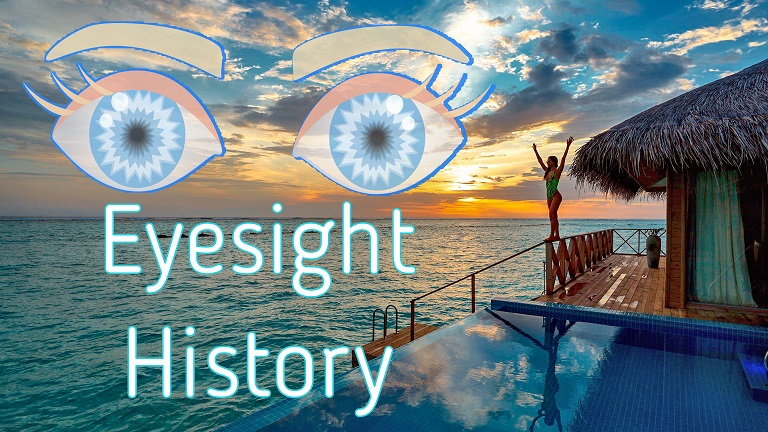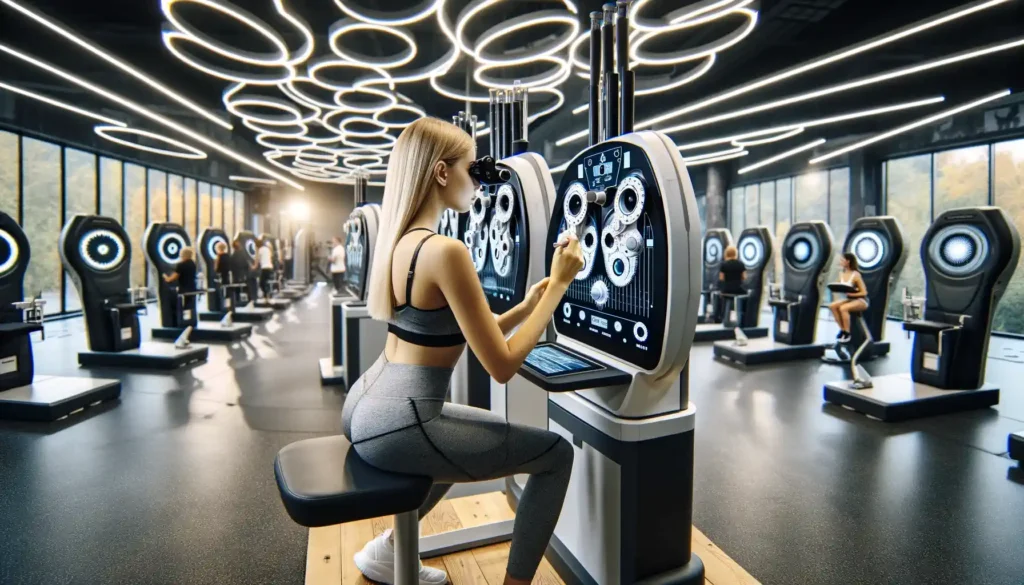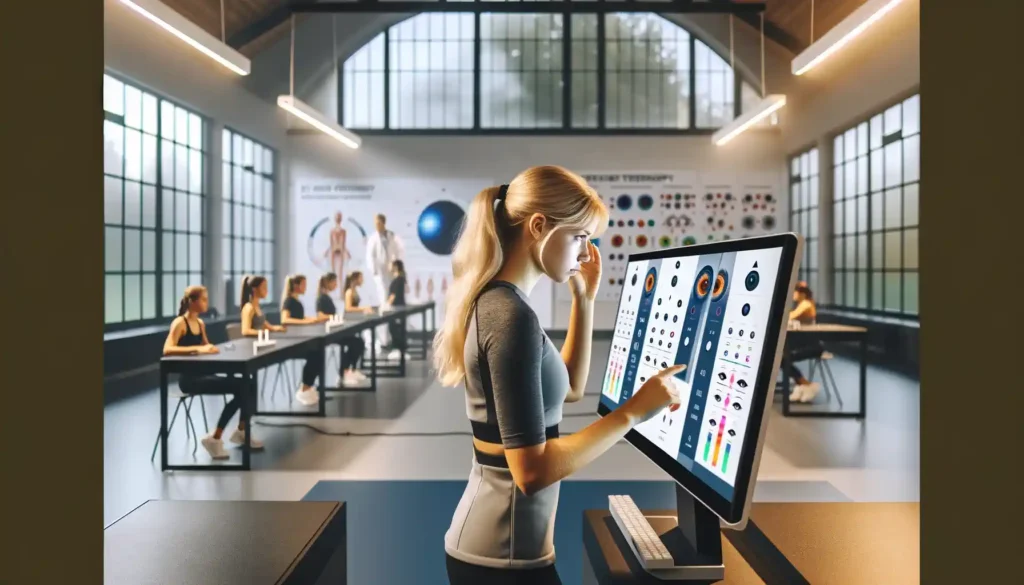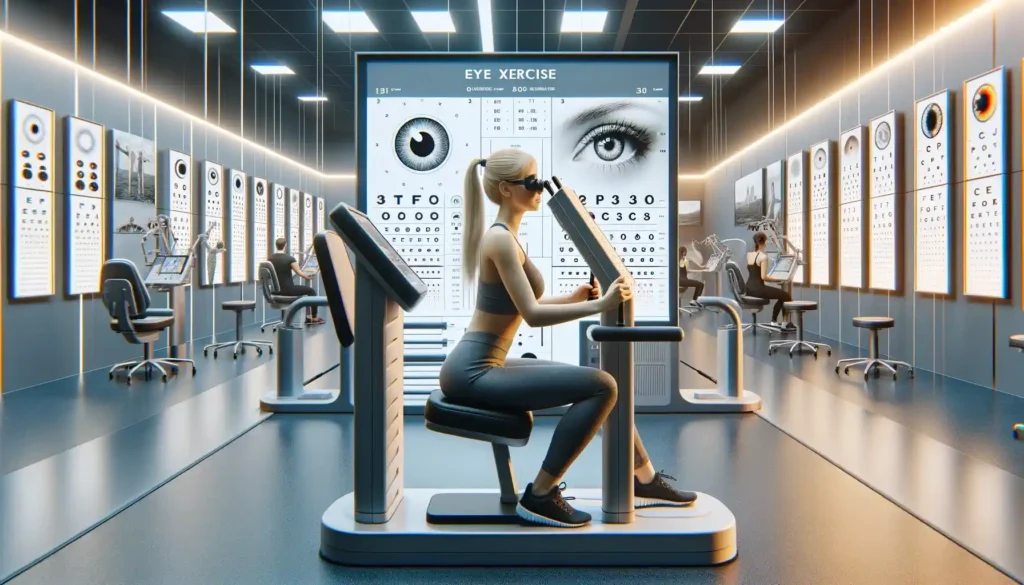
How to overcome myopia and farsightedness: Helmholtz vs Bates method. Hello everybody and welcome to the Natural Vision Recovery Blog. My name is Sviatoslav and today we will talk about How eyesight works according to German doctor Helmholtz. What are myopia and hyperopia according to Helmholtz? And how does a person really see? Bates method.
How eyesight works according to German doctor Helmholtz. About 180 years ago, German physicist and physiologist Hermann Helmholtz suggested. That the human eye has the shape of a ball. In the front part, there is a lens, a biconvex lens. And around the lens is the so-called circular ciliary muscle.

How to see clearly by Dr. Helmholtz’s method
So how does a person see according to Helmholtz? When the ciliary muscle is relaxed, the lens is flat, and the focus of the lens is on the retina. And such a relaxed eye with a flat lens perfectly sees into the distance, because a clear image of distant objects. According to the laws of geometric optics, is built in the area of the focus of the optical system. In this case, a clear image of a distant object will be just on the retina of the eye
Understanding Myopia and Farsightedness: Helmholtz Approach
But a person needs to see up close. To see up close, you need to change the parameters of this optical system. Helmholtz suggested that to see up close, a person strains the ciliary muscle. It compresses the lens from all sides, the lens becomes more convex and changes its curvature. The focal length of the convex lens decreases, and the focus goes into the eye. And such an eye with a convex lens sees perfectly up close. Because a clear image of those close to them by the subject according to the laws of the same geometric optics is built behind the focus of the optical system. In this case, the image of this close object will again turn out exactly on the retina of the eyes.
When a person needs to see into the distance. He blinked, and relaxed the ciliary muscle – the lens is flat, and he sees into the distance. It is necessary to see it up close – it strains the ciliary muscle, the lens is convex and it sees up close.
The History and Principles of Helmholtz Myopic Eye Method
What is myopia according to Helmholtz? Some people have strains in the ciliary muscle, the lens becomes convex, but this muscle does not relax back. He called it a myopic convex lens. They see well up close, but they do not see into the distance, because a clear image of a distant object is built in the focus area of the optical system. In this case, the clear image will be inside the eye. On the retina, there will be some kind of unclear, blurry spot. Then Helmholtz proposed to compensate for myopia with a biconcave negative minus spectacle lens. The focal length of the system (concave lens plus convex lens) increases. With the help of glasses, the focus is returned to the retina of the eye and myopic people in minus glasses can see perfectly into the distance.
Since then, 180 years ago, all eye doctors in the world for myopic people have chosen minus glasses and recommend them for constant wear.
The History and Principles of Helmholtz’s farsightedness method
What is hyperopia or farsightedness according to Helmholtz? Many people, Helmholtz believed, the work of the ciliary muscle weakens with age. As a result, the lens is flat, the focus of the lens is on the retina, and classic farsighted people see perfectly in the distance. But here you have to see it up close.
To see up close, you have to squeeze the lens and make it convex. And eye muscle does not have enough strength to squeeze the lens. A person looks into the book, and a clear image of the letters is built behind the focus of the optical system, somewhere closer to the back of the head. On the retina, there will be just an unclear, blurred spot. Then Helmholtz proposed to compensate for hyperopia with the help of a biconvex plus spectacle lens. The focal length of the system (a convex lens plus a flat lens) decreases. With the help of glasses, the focus is brought into the eye and farsighted people in plus glasses can see well up close.
And since then, 180 years ago, all eye doctors in the world for farsighted people choose plus glasses, recommend them for reading and for working at a close distance.
How to overcome myopia and farsightedness: Helmholtz vs. Bates method
How to overcome myopia and farsightedness: Helmholtz vs Bates methods. Well, it would seem, that’s it, a trap – you can’t get away from the Glasses by Helmholtz. But to our happiness, there lived a wonderful American scientist, professor, and ophthalmologist William Bates. Bates was a very honest man. After graduating from medical school, he worked as an eye doctor for five years and was horrified and desperate at the results of his work.
Every patient to whom Bates prescribed glasses, had deteriorated vision from the glasses. None of his patients had their vision after wearing glasses returned. And he asked himself the question: “Well, how is that?” – he is an eye doctor, he must treat people’s eyes. He prescribes glasses for them. And their eyesight is getting worse and worse from glasses, and after two or three or four years they come, to demand new, thicker, and stronger glasses.
Nature trip to improve your vision by Bates Method
The second thing Bates drew attention to is that some of his patients in the summer went to the countryside, to the mountains, to rest. And there they accidentally lost or broke glasses. And he lived in the nineteenth century, glasses were quite expensive, and people with poor eyesight were forced to do without glasses for a month or two. When they returned from this rest, they came to him for glasses, he checked their eyesight according to the table and was surprised to note that many, due to the fact that they walked without glasses, their eyesight began to improve.
Bates Experience method to overcome myopia and farsightedness
Bates studied the human eye for thirty years. He developed and manufactured a device unique for its time, which he called the “retinoscope”. With the help of a retinoscope from a distance of up to two meters, he could determine the parameters of the eye. He watched how the vision changes in the nearsighted, and farsighted, in children during the game, and in athletes.
Vision Correction Showdown: Helmholtz vs. Bates Methodology
And so, studying the work of the human eye for thirty years, Bates concluded that Hermann Helmholtz’s theory of vision is incorrect at all. The image in the human eye is not constructed in the way that Helmholtz suggested – due to the work of the ciliary muscle and changes in the curvature of the lens, and the image in the human eye is constructed in the same way as it is constructed in an ordinary, simplest camera. By changing the length of the eye itself. Here the main work in the process of accommodation, that is, aiming the eye at sharpness, is played by the six oculomotor muscles.
Each person has six oculomotor muscles in each eye. This is the upper superior rectus that lifts the eye up, this is the lower inferior rectus, which lowers the eye down, the inner lateral rectus, which brings the eye to the nose, the outer medial rectus, which leads the eye to the side, and two very important, the inferior oblique and superior oblique muscles of the eye – the upper superior oblique, which fits the eye across in a semicircle from above, and the lower inferior oblique which is a semicircle from below.
How to See Clearly by Bates
When all six oculomotor muscles are completely relaxed, the eye really takes the shape of a ball due to internal pressure, the focus of the lens is on the retina, and such a relaxed eye sees perfectly into the distance. But to see up close, you need to change the parameters of this optical system.
And it turns out that in order to see up close, a person actually does the following. Relaxes the superior, inferior medial, and lateral rectus muscles and strains the upper and lower inferior oblique and superior oblique muscles squeezing the eye from above and below. And the human eye is liquid. Due to this compression, it is fed, and pulled forward like a cucumber, like a camera lens. The focus goes into the eye, and such an outstretched eye sees perfectly close. A person needs to see into the distance again – he blinks, relaxes the oblique muscles, tightens the superior, inferior medial, and lateral rectus eyes muscles, the eye again takes the shape of a ball, and he again sees perfectly into the distance.

How to overcome myopia and farsightedness with Eyesight Academy Course
Are you tired of wearing glasses or contacts? Do you want to improve your vision naturally and permanently? If you answered yes, then you need to check out the Eyesight Academy Course. This course will teach you how to overcome myopia and farsightedness with eye exercises and relaxation methods.
You will learn eye exercises clear vision habits, and techniques that will help you see clearly. The course is easy to follow, fun to do, and suitable for all ages and levels of vision.
Eyesight Academy will guide you along the way. Don’t miss this opportunity to transform your vision and your life. Enroll in the Eyesight Academy Course today. This offer is valid only for a limited time, so hurry up and claim your spot now!
Thanks for reading to the end. Today we discussed How eyesight works according to German doctor Helmholtz. Helmholtz vs. Bates method to overcome myopia and farsightedness. What are myopia and hyperopia according to Helmholtz? And how does a person really see? And Dr Bates’s Practical knowledge about it. I hope it was interesting for you and it will help. Subscribe to my channel and will see you again.
- Why Your Eyeball Feels Weird: Eye Elongation and Eye Muscle Tension
- Is Your Eyesight Getting Worse Quickly? The Real Reason Might Surprise You
- How to Improve Eyesight at Home: 5 Eye Exercises and Relaxation Tips
- 7 Easy Ways to Stop Eye Twitching Before It Drives You Crazy
- Eyesight Academy to Get Better Eye Health Naturally

